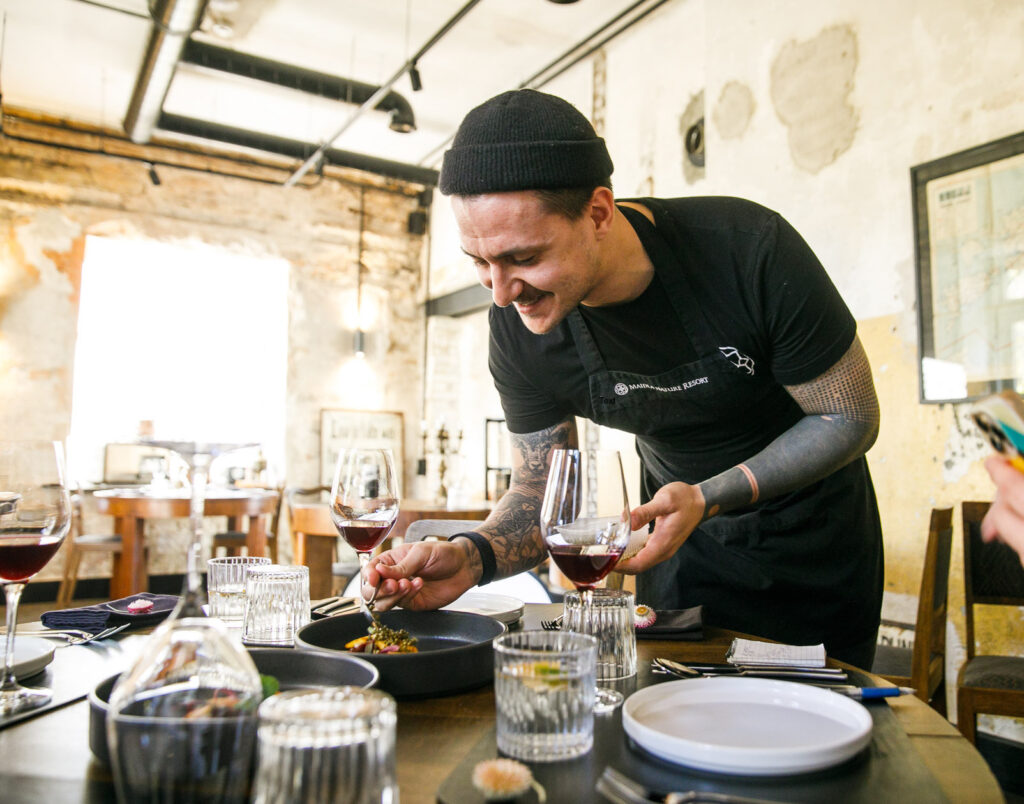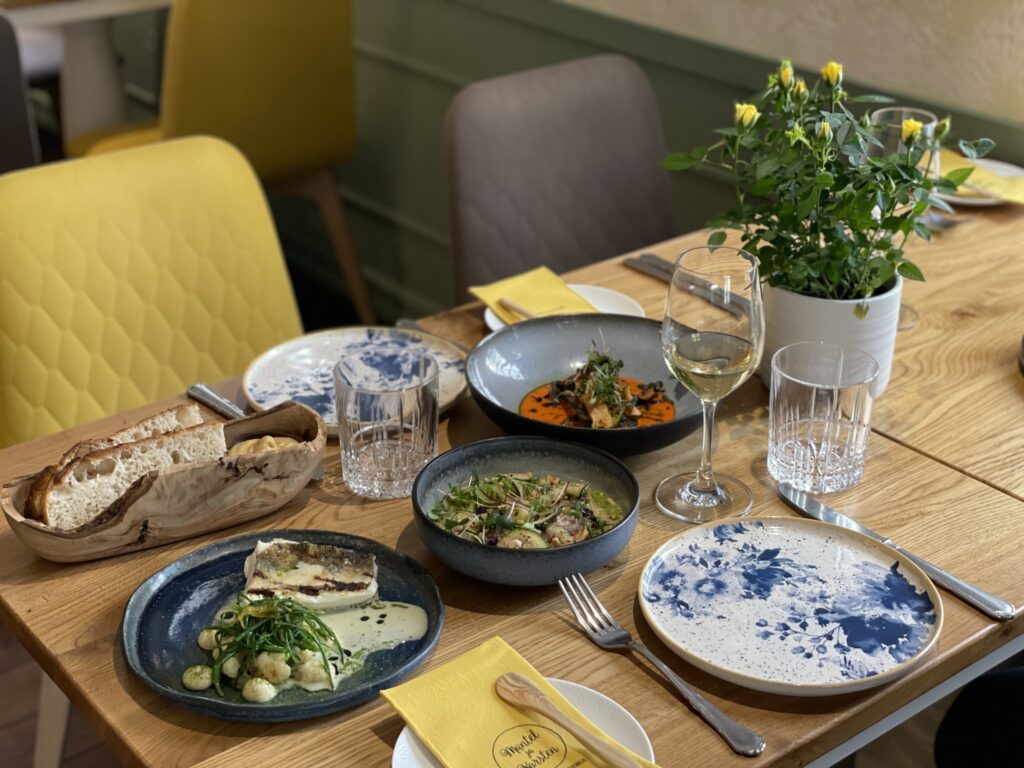The Michelin Guide 2023 features 34 establishments and includes Estonia’s first restaurant with two-Michelin stars; one restaurant honoured with one star; six restaurants awarded a Michelin Bib Gourmand for great value; and two restaurants highlighted with a Michelin Green Star for sustainability.
The French-founded Michelin Guide, the world’s most prestigious culinary guide, expanded to Estonia in 2022. While last year, the guide featured 31 establishments, including two single-starred restaurants – the Tallinn-based Noa Chef’s Hall and 180 Degrees – this year’s edition has highlighted 34 eateries. Noa Chef’s Hall, run by Tõnis Siigur, retains its one-star status, and 180 Degrees, run by Matthias Diether, is awarded two stars – Estonia’s first.
“Thanks to last year’s inaugural edition, more and more people are discovering the hidden jewel that is Estonia’s culinary scene – and we are delighted that this second edition updates and expands that original selection,” Gwendal Poullennec, the international director of the Michelin Guides, said in a statement.
“The country offers a very appealing mix of restaurants and can boast plenty of skilled and ambitious chefs who are taking full advantage of the local produce. Now is a great time to visit if you want to take advantage of a varied and burgeoning gastronomic scene, whose quality is illustrated by the promotion of restaurant 180° by Matthias Diether to two Michelin stars,” he added.

The Tallinn-based Tuljak is a new addition to the five existing Bib Gourmand restaurants, Fellin in Viljandi and Härg, Lore Bistroo, Mantel ja Korsten, and Noa in Tallinn. The Michelin Bib Gourmand award highlights restaurants offering good quality food at a great price.

Fotografiska, in Tallinn’s Telliskivi Creative City, retains its Green Star – an annual distinction that highlights restaurants that offer dining experiences that combine culinary excellence with eco-friendly commitments and are a source of inspiration both for keen foodies and the hospitality industry as a whole.
Restaurant Soo, located in Maidla, Rapla County, is a new addition to this year’s guide and is also recognised with a Michelin Green Star. Also, Soo’s chef, Daanius Aas, is recognised with the Michelin Young Chef Award, highlighting “a very promising professional” whose talent and dedication have particularly impressed the Michelin inspectors over the past year. Aas works alone, cooking for five tables in this intimate restaurant that forms part of Maidla Nature Resort.

In addition to Soo, four other restaurants have been added to the guide: Art Priori and Barbarea in Tallinn, Rado in Haapsalu and Alexander in Muhu Island.
The Michelin Guide 2023 restaurants in Estonia: 38 (Tallinn), Cru (Tallinn), Fii (Tartu), Gianni (Tallinn), Hõlm (Tartu), Horisont (Tallinn), Joyce (Tartu), Lahepere Villa (Kloogaranna), Lee (Tallinn), Mere 38 (Võsu), Mon Repos (Tallinn), Moon (Tallinn), Paju Villa (Tallinn), Pull (Tallinn), Puri (Tallinn), R14 (Tallinn), Rado (Tallinn), SMAK (Tallinn), Tchaikovsky (Tallinn), Wicca (Laulasmaa), Soo (Maidla), Art Priori (Tallinn), Barbarea (Tallinn), Alexander (Muhu), Fotografiska (Tallinn), Tuljak (Tallinn), Rado (Haapsalu), Fellin (Viljandi), Härg (Tallinn), Lore Bistroo (Tallinn), Mantel ja Korsten (Tallinn), Noa (Tallinn), Noa Chef’s Hall (Tallinn), 180 Degrees (Tallinn).
A historical guide
The Michelin Guide is historically closely related to the namesake French tyre company – the second-largest tyre manufacturer in the world.
The story goes back to Clermont-Ferrand in central France in 1889, when brothers Andre and Edouard Michelin founded their eponymous tyre company, fuelled by a grand vision for the French automobile industry at a time when there were fewer than 3,000 cars in the country.
In order to help motorists develop their trips – thereby boosting car sales and in turn, tyre purchases – the Michelin brothers produced a small guide filled with handy information for travellers, such as maps, information on how to change a tyre, where to fill up on fuel, and, for the traveller in search of respite from the adventures of the day, a listing of places to eat or take shelter for the night.

For two decades, all that information came at no cost. Until at one day, Andre Michelin arrived at a tyre shop to see his beloved guides being used to prop up a workbench. Based on the principle that “man only truly respects what he pays for”, a brand-new Michelin Guide was launched in 1920 and sold for seven francs.
In 1926, the guide began to award stars for fine dining establishments, initially marking them only with a single star. Five years later, a hierarchy of zero, one, two and three stars was introduced, and, in 1936, the criteria for the starred rankings were published.
One star stands for “a very good restaurant in its category”, two stars for “excellent cooking, worth a detour”, and three stars for “exceptional cuisine, worth a special journey”.
Since 1997, the Michelin Guide has also given the Bib Gourmand award – named after Bibendum, the official company mascot for the Michelin Group – the restaurants without stars but offering good quality and good value.
In 2016, another indicative symbol was added to the guide, a plate with a knife and fork beside it. “The plate” stands for a restaurant that serves dishes that are capably prepared and consist of fresh ingredients.

France leads in gastronomy
Michelin has gone to extraordinary lengths to maintain the anonymity of its inspectors. Many of the company’s top executives have never met an inspector; inspectors themselves are advised not to disclose their line of work, even to their parents – who might be tempted to boast about it.
In all the years that it has been putting out the guide, Michelin has refused to allow its inspectors to speak to journalists.
The inspectors’ assessment is based on five rating criteria: quality of products, mastery of flavour and cooking techniques, the personality of the chef represented in the dining experience, harmony of flavours and consistency between inspectors’ visits.
The Michelin Guide now rates over 30,000 establishments in 37 territories across three continents.
As of 2021, France has the highest number of Michelin-starred restaurants in the world – a whopping 632 of them. Japan is ranked second, with 413 restaurants, followed by Italy (363), Germany (305), and Spain (212). The most decorated chef by the Michelin Guide is a French chef Alain Ducasse, who in total holds 19 Michelin stars in his restaurants across the world.

